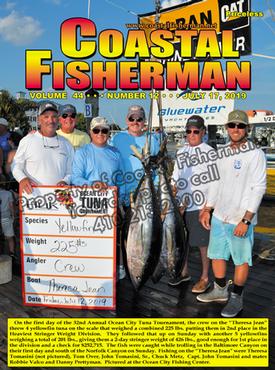


Article by Capt. Steve Katz
 Pump it up
Pump it up
Every season there seems to be an endless assortment of bilge pump concerns, issues and problems for many boats.
The purpose of a bilge pump is to remove incidental water from the bilges of a boat, because of rain water entry, spray, dripping shaft or rudder packing glands and other minimal water accumulation from seepage and spillage. A bilge pump system is not designed to de-water a boat as damage control. This is where “crash pumps” come into the picture.
A bilge pump system may seem simple, but can often confuse the best of captains and crews. The American Boat and Yacht Council (ABYC) publishes a standard that relates to bilge pumps and related systems.
These standards are useful to all boat owners, not just boat builders, and provides a well thought out and proven method of installing and maintaining your bilge pump system.
Let’s look at a few key points from ABYC that can help all boaters:
Overcurrent protection or fuse.
Each power supply to a bilge pump, usually manual and automatic, shall have a fuse and wire size selected by the rating of the pump. Most bilge pumps indicate the appropriate fuse size on the pump itself or in the pump’s instructions. The fuse is to protect the wiring and pump from burning in the event of a running overload or locked rotor. A locked rotor is a situation where debris or some other event has caused the rotating part of the bilge pump to stop moving, which in general causes the pump to use more electricity and should blow a fuse before overheating the pump or wiring. Debris in the bilge is often the number one culprit to a locked rotor bilge pump.
Since most bilge pumps have two sources of power, a manual switch and an automatic float switch, each of these circuits needs to be appropriately fused. This standard would easily demonstrate that you cannot properly connect two bilge pumps to one fused source of power circuit, since the fuse would need to be double the required size and would not “blow” in the event of a failure of one individual pump.
This double pump on one circuit is often found where a boat owner has decided to add a second bilge pump without running a new circuit.
Check valves in the discharge line.
This is one of the most popular mistakes by boaters and sometimes boat builders. ABYC’s only permitted use of a check valve in the discharge line is to prevent pump cycling due to backflow from the discharge line. A check valve can restrict the pumps flow rate, get stuck closed or get stuck open. Any of these situations could result in a major problem, with the most critical causing a backflow of seawater into the bilge.
Now for some everyday wiring information.
Most bilge pump circuits are comprised of three wires – one ground wire, one wire connected to a manual on/off switch and one wire from an unswitched source of power going to an automatic float (or similar) switch. A standard bilge pump has only two wires – so how does this get connected properly?
The ground is simple, it gets connected directly to the pump ground wire. The pumps positive wire gets connected to TWO wires - one from the manual switch and one from the automatic float switch. This way, the pump can be activated in two different methods. One benefit to this wiring scheme is that it allows for an optional indicator light to be illuminated whenever the pump is running, no matter if it was activated manually or automatically.
There is more to pump capacity than what is written on the package. Most bilge pumps are labeled with the capacity in gallons per hour or GPH at zero head (a straight horizontal discharge) at a given voltage, which is often at a higher voltage than you may see on your boat.
Often the real world performance in GPH of a pump is much lower than advertised due to these variables along with restrictive overboard plumbing. For example, the popular Rule 1500 bilge pump (advertised at 1500 GPH), operating at 12 volts and pumping water upwards for 3.3 feet (head) is only capable of 1,000 GPH. Then add in restrictive discharge hoses, elbows, adapters, thru hull fittings, etc. and real world capacity will be much lower than expected.
It is a good idea to take the time to evaluate the wiring and plumbing of your bilge pump systems and take corrective action where needed to help alleviate any surprises during your fishing trips. Be sure to test run all your bilge pumps in both manual and automatic mode before a trip to be sure everything is in working order.
Captain Steve Katz is the owner of Steve’s Marine Service and holds NMEA, AMEI and NMEA2000 certificates along with ABYC Master Technician certification and factory training from many manufacturers. To reach Steve, call 410-231-3191.